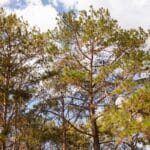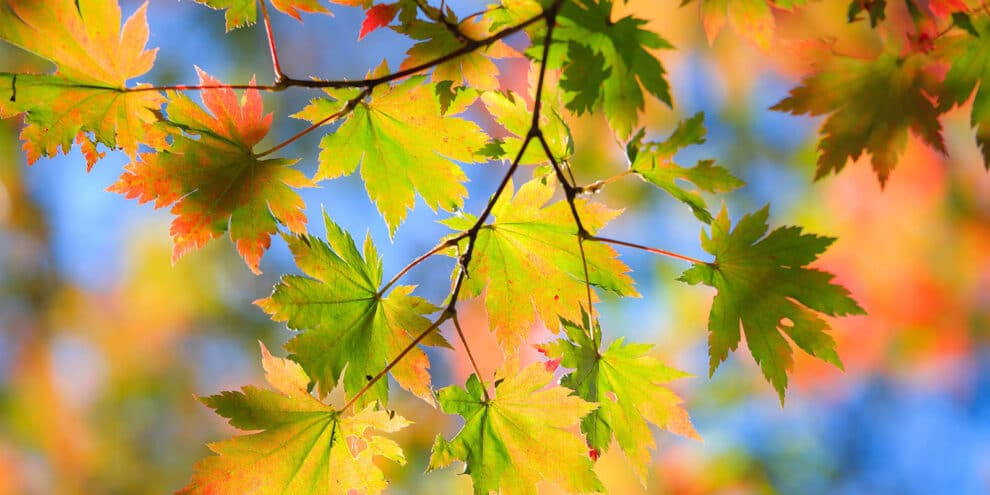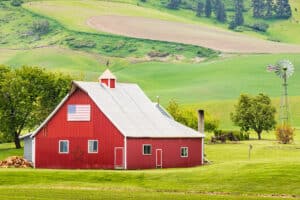Why Fall is Best Time to Plant Trees
Believe it or not, February through early March is the time most folks in the South start planting, while folks up North have to wait for the ground to thaw in the spring. These still remain safe and reliable tree planting times. However, with the advent of containerized, air-pruned seedlings, planting trees in the fall can be more productive in areas of the South where the ground doesn’t stay frozen. Here are some benefits of planting trees in the fall.
Fall Facilitates Faster Root Growth
By planting in the fall, you get all of the cooler temps of both fall and spring to produce great roots to suck up as much summer moisture as they can when swelter hits. Planting in fall also promotes higher survival rates because warm soil encourages root growth while cooler air reduces stress on the tree, allowing it to focus energy on root establishment before spring. This creates a strong root system to support the tree in its first year and provides a head start for spring growth.
Less Watering is Needed
Cooler, wetter weather is the perfect time for tree planting. With an increase in rainfall and cooler temperatures in the fall, less watering is needed. As tree shoot growth halts, the trees require less water because the days are cooler and shorter and the rate of photosynthesis decreases. Once again, the tree will have all winter and spring to get used to its surroundings and put down roots. When the summer heat wave hits, a fall-planted seedling can, in most climates, make it through the season without supplemental watering.
More Time in the Spring
Fall tree planting allows more time the following spring to handle other important landscaping projects on your property, such as fertilization, and weed and insect control. Fall planting can allow you to tackle a significant portion of your landscaping before the spring rush, freeing up time to enjoy the fruits of your labor when spring arrives. You’ll also have a better idea of your garden’s structure and needs, making spring planning more efficient.
If you are serious about fast growth, lower maintenance, and early and abundant fruit/seed production, give fall tree planting a try. You’ll be glad you did!
How to Plant Trees in the Fall
Various mast producing trees such as oaks and fruit trees are a great way to provide additional food to the wildlife on your property in key areas. Here are a few tips to keep in mind to ensure success.
Finding the Best Spot for Planting
There is a reason farmer’s plant their crops in specific areas. Trees also grow faster and thrive in areas they prefer. When given a choice between planting a tree atop a rocky hilltop or down in a valley or bottom, generally the area that’s lower in elevation will have better growing conditions. When selecting a location for planting, it’s beneficial to observe and analyze the existing vegetation as a clue to the suitability of the environment. If you see one particular spot that has taller or greener vegetation, plant your tree there.
Prep Your Planting Site
Nobody has much success transplanting tomato and other vegetable starts directly into their backyard without first preparing a proper bed. If you want success with tree plantings you must first spend the extra time preparing each individual planting hole prior to the day your tree seedlings come in the mail. Simply flag or mark each location, terminate the weeds, then dig and backfill the hole. When you come back to plant the tree its roots will now have a nice bed to grow in.
Protect Your Investment
Why spend time and money on preparation, seedlings, and planting day to come back weeks later and find your tree has been eaten by deer or your cousin ran over them with the tractor. Tree tubes (a.k.a tree protectors) safeguard tender seedlings during their vulnerable early growth stages. They protect seedlings from all sorts of damaging agents AND increase growth rates. Tree protection is a no-brainer.
Plant Reasonable
Unless you are going big and reforesting large acreage, consider planting no more trees than you have time to individually visit at least 2-3 times per growing season for the first three years. For the guy who lives ten minutes down the road from their property, that may be as many as 400-500 trees. If whatever reason you may not have as much spare time to intensively manage your planted trees, 20 trees a year may be your lucky number. Meticulous care translates into significantly improved outcomes, whether it’s through increased yield, enhanced quality, or greater resilience against stressors. The point is, all of the seedlings you plant deserve to be intensively managed so they’ll quickly become well on their way to heavy crops for you and your wildlife.
Mossy Oak Nativ Nurseries is dedicated to growing the country’s best seedlings and plants for nature enthusiasts, wildlife and habitat managers. For help choosing the right trees for your property visit nativnurseries.com.
Article contribution by Mossy Oak Properties. The Mossy Oak Properties land brokerage network was launched in 2003 and has since grown to over 100 franchised brokerages in over 30 states throughout the country.
This content may not be used or reproduced in any manner whatsoever, in part or in whole, without written permission of LANDTHINK. Use of this content without permission is a violation of federal copyright law. The articles, posts, comments, opinions and information provided by LANDTHINK are for informational and research purposes only and DOES NOT substitute or coincide with the advice of an attorney, accountant, real estate broker or any other licensed real estate professional. LANDTHINK strongly advises visitors and readers to seek their own professional guidance and advice related to buying, investing in or selling real estate.










Add Comment